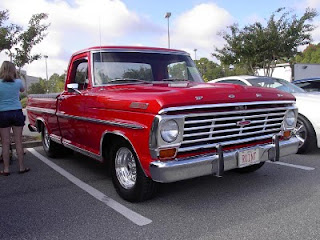There were no folding camp stools or gas powered barbeque. 'Set up camp' meant digging a fire pit, lining it with stones and clearing the area around it of snow and /or flammable materials. It meant finding tree stumps or deadfalls that could serve as stools. The tailgate of the truck was the food preparation area, with all of our cooking utensils just inside the box of the truck and below our sleeping platform. Meals were cooked in fire blackened pots either set amongst the coals of the campfire, or propped on large pieces of wood which eventually succumbed to the heat and added to it. Mittens served the double purpose of keeping hands warm in the cold air, and protecting them from burning when removing a pot or a tea kettle from the fire. Water for washing dishes and, just before bed, ourselves, was heated over the last of the campfire's embers in an enameled dishpan, while we squatted around the fire to eat. When we first arrived in April, there was still too much snow to get into any of the government campsites, so we found quiet places off of little-traveled roads to camp at.
The campfire was our only source of heat, for both comfort and for food. Fire was life. The morning campfire warmed water for the first cup of tea of the day, and a pot of oatmeal. Lunch was usually leftovers from the previous evening's meal, or bannock with preserves from the previous summer's berries and fruit. I was getting very good at making bannock. Often it was closer to cake than to bread, made rich with dried apples or raisins I'd soaked overnight, honey and cinnamon. There was no need for refrigeration, as nighttime temperatures still dropped below freezing, and daytime temps were not far above it. Long woolen underwear was de rigueur, even for the baby, as were thick woolen socks and hats. He spent much of his time in a corduroy baby carrier on mum's chest, safely tucked and zipped under my coat, with just his hat and bright little eyes showing.
On a walk along the creek one evening, we spotted a winterhawk in the sky, and
came across the remains of its recent meal. The hawk had left a few small, delicately striped feathers behind, so we picked the best one and tucked it in the brim of the baby's knitted hat. We began to call babe Pigeon Hawk, because he was small and not very fierce.
We'd brought non perishable food supplies - flour, margarine, salt, baking powder, honey, rice, oatmeal, etc. and canned berries and fruit. So there was always food, though not much protein. To rectify this, we poached - duck or partridge mostly, hunted by Mitch with a .22 rifle or, if we thought the game warden might be within earshot, a compound bow and arrows. Meat was a treat not enjoyed every day, until we discovered the place was crawling with porcupines.

The dog, in fact, made this discovery for us, by coming back from a ramble with a mouth full of quills.
After some experimentation we learned how to best skin a porcupine without bodily harm. Skinning a porcupine also takes a very strong stomach, as they're crawling with vermin. After all, how 's a porky to groom himself without injury? Once the pelt is separated from the protein inside, you're left with a treat. Small cubes of young porcupine cooked on a stick over the fire proved to be quite delicious, and porky soon became a favorite. It didn't hurt that they were everywhere, and, being who they are, have few predators, so t hey don't seem to make any effort at all not to be seen or apprehended.
The plan was to find out who had the trapline where we hoped to settle, and, best case scenario, reach some 'sharing' agreement. Worst case, we'd reconsider our final destination.





